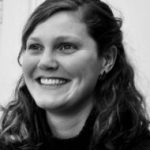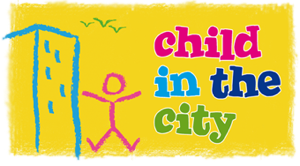Parallel session: Urban development and poverty (11:30-12:30)
Presentation 1: Large cities – small families? Taking the view of children with at least two siblings
Presented by: Norbert Neuwirth
Abstract: European countries and – first and in a much greater extent – European cities have experienced the Second Demographic Transition, starting in late 1960ies and still lasting. Birth rates fell, life expectancy increased, so the average age raised more sharply compared to most suburban and rural areas. Especially the average family size in urban areas fell sharply. Nowadays, large families (with at least three children) seem to be widely forgotten in urban family and social policies, although high numbers of children are one of the driving factors of the multidimensional poverty traps families can be captured in. The paper presented will show the difference in poverty risks and social exclusion children from large families in urban areas have to face compared to (a) urban children descending from smaller families (up to two children) or to (b) rural and sub-urban children with at least two siblings. How are these various forms of poverty risks and risks of social exclusion translated to schooling careers? How can siblings in urban regions support each other? Are there significant differences between the region types (urban, sub-urban, rural areas) in this respect? Can we identify regional differences in the resilience of children and adolescents from disadvantaged social backgrounds by the number of siblings and the birth order? The Study is focused on the Austrian population, but many statistical comparisons to selected European Countries will be presented. The Austrian part of the study focuses on the question “What kind of policies have been employed for urban multi-children-families yet, which policies can improve the situation of children with at least two siblings efficiently?” from the children’s viewpoint.

Presentation 2: Spatial and social quality according to children and teenagers in a modernistic high-rise environment
Presented by: Marlies Marreel
Abstract: Children and teenagers grow up in very different housing environments, each of them carrying different spatial, social and cultural meanings and offering different opportunities. In the multidisciplinary “BLOK” research project we focus on children’s perspectives in “Europark”: a modernistic and multicultural high-rise environment in the city of Antwerp. The spatial layout of Europark was partly based on Modernistic principles. A recent urban regeneration project redeveloped parts of the outdoor environment in an effort to generate more intergenerational contacts. The amount of children growing up in this environment is very high: in some of the buildings up to half of the inhabitants are minors. One of the main research goals of our participatory research project is to understand more about the notion of spatial and social quality in this particular housing environment, specifically through the eyes of local children and teenagers. Methodologically we combined individual interviews and group discussions with children of different ages. Together with these children, we used different ways of mapping the neighbourhood: through drawings, photography and group walks. During these interviews and workshops, children and teenagers told us about (their perception of) the neighbourhood, what they know about it, who they meet, what they like and dislike about it, where chances for improvement are. Results of this ongoing study present a variety of relevant themes, such as independent mobility, hobbies and free time, places to meet and play. By linking statements to theoretically founded concepts of social and spatial quality, we hope to provide a more comprehensive understanding of what a qualitative high-rise environment is from children’s and teenager’s point of view.

Presentation 3: Who is (responsible for) making the environment child-friendly? – Experiences from an interdisciplinary academic exercise
Presented by: Jo Boonen
Abstract: In contemporary practices of planning a more child-friendly environment, children and teenagers are often considered as a separate category with specific needs in specific spaces. We suggest a more relational approach where children are deemed full citizens who can take part in the urban debate. This shift means that discussions about space do not focus on different needs of different people, but rather on spatial quality itself as a shared good. In this logic, spatial quality is acquired through participatory design and planning processes including children and teenagers. That brings up the question: who are the professionals responsible for making the environment more qualitative? When talking about space, we can see that this concept has not one but many definitions: economical, ecological, aesthetical, social, etc. We cannot speak about ‘spatial quality’ taking in account just one of these meanings, as space contains all of them. When working with or in space, interdisciplinary work is a must. Interdisciplinary work is also recognised as an important competence in the schooling of future professionals like social workers and landscape architects, but it is rarely put into practice. Landscape architects (and maybe design-oriented studies in general) often work in an academic quarantine where some social realities are not considered, and social work students sometimes get little information about how spatial realities influence community-building. In the University college of Ghent we saw an opportunity here, and we have set up an interdisciplinary exercise bringing together students from the two aforementioned studies. Using a housing environment in the city of Ghent (Belgium) as a case with child-friendly planning is a central concept, we show the students the complexity, opportunities and value of working in an interdisciplinary team. We would like to share our experiences, thoughts and conclusions of this academic exercise.

